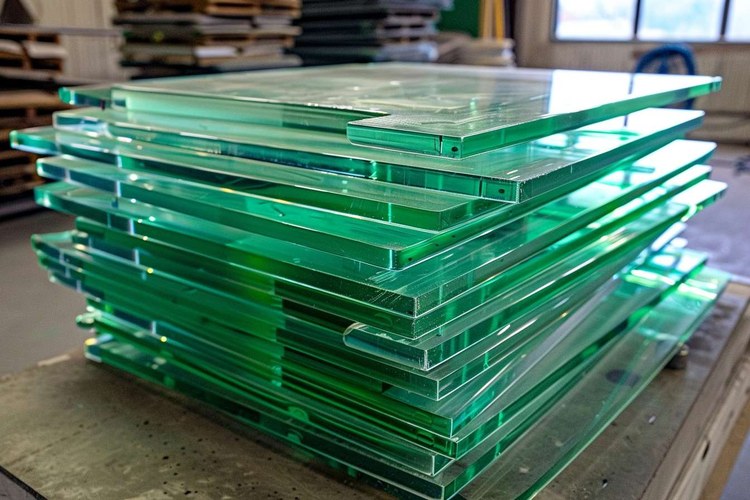UV Resistant Polycarbonate Roof Sheets: Your Complete Guide
Polycarbonate roof sheets have gained significant popularity in recent years, particularly in regions with harsh weather conditions. These durable, lightweight materials offer excellent protection while maintaining transparency, making them ideal for various roofing applications. With advanced UV protection technology, these sheets provide long-lasting performance even under intense sunlight and challenging weather conditions.

What to Know About UV Resistant Polycarbonate Roof Sheets for Canadian Weather
Canadian weather presents unique challenges for roofing materials, with extreme temperature fluctuations, heavy snow loads, and intense UV exposure during summer months. UV resistant polycarbonate roof sheets are specifically engineered to withstand these harsh conditions while maintaining their structural integrity and optical clarity.
These sheets typically feature a co-extruded UV protection layer that shields the material from harmful ultraviolet radiation. In Canadian climates, this protection is essential because UV rays can cause standard plastics to yellow, become brittle, and eventually fail. Quality UV resistant polycarbonate sheets can withstand temperatures ranging from -40°C to +120°C, making them suitable for Canada’s diverse climate zones.
The material’s impact resistance is particularly valuable in regions prone to hail storms, as polycarbonate is virtually unbreakable compared to glass or standard acrylic alternatives. Additionally, these sheets offer excellent insulation properties, helping to reduce energy costs during Canada’s long winter months.
How UV Protection Works in Poly Roof Panels
The UV protection mechanism in polycarbonate roof panels involves sophisticated manufacturing processes that integrate protective elements directly into the material structure. Most high-quality panels feature a co-extruded UV protective layer on the top surface, which acts as a barrier against harmful ultraviolet radiation.
This protective layer typically contains UV stabilizers and absorbers that work together to prevent UV rays from penetrating the core material. The stabilizers help maintain the molecular structure of the polycarbonate, while the absorbers convert harmful UV energy into harmless heat. This dual-action approach ensures long-term protection without compromising the material’s transparency or strength.
The thickness of the UV protection layer is crucial for performance longevity. Premium manufacturers apply layers ranging from 50 to 70 microns thick, providing protection that can last 10-25 years depending on environmental conditions. This technology prevents the yellowing, cracking, and loss of impact resistance that can occur in unprotected polycarbonate materials.
Where UV Resistant Poly Sheets Are Commonly Used in Roofing Projects
UV resistant polycarbonate sheets find applications across numerous roofing projects, from residential to commercial and industrial settings. Greenhouse construction represents one of the most common applications, where the material’s light transmission properties combined with UV protection create optimal growing conditions while protecting the structure itself.
Residential applications include patio covers, carports, walkway canopies, and skylight installations. These sheets provide natural lighting while offering protection from weather elements. Commercial applications encompass shopping center walkways, stadium roofing, swimming pool enclosures, and warehouse skylights.
Industrial uses include manufacturing facility roofing, where natural lighting can reduce energy costs while the UV protection ensures long-term durability. Educational institutions often utilize these sheets for covered walkways, sports facilities, and cafeteria roofing. The versatility of polycarbonate sheets makes them suitable for both new construction and renovation projects.
How These Roof Sheets Might Compare to Other Clear Roofing Materials
When comparing UV resistant polycarbonate sheets to other clear roofing materials, several key differences emerge. Glass offers superior optical clarity and scratch resistance but lacks the impact resistance and lighter weight of polycarbonate. Glass is also more expensive to install and poses safety risks if broken.
Acrylic sheets provide good clarity and are less expensive than polycarbonate, but they offer significantly lower impact resistance and may crack under stress. Acrylic also tends to scratch more easily and may not provide the same level of UV protection without additional treatments.
Fiberglass reinforced panels are durable and cost-effective but typically offer less light transmission and can become discolored over time. PVC sheets are economical but may not provide the same structural strength or temperature resistance as polycarbonate materials.
| Material Type | Light Transmission | Impact Resistance | UV Protection | Cost Range (per sq ft) |
|---|---|---|---|---|
| UV Resistant Polycarbonate | 80-90% | Excellent | 10-25 years | $3-8 |
| Tempered Glass | 90-95% | Good | Natural | $5-12 |
| Acrylic Sheets | 85-92% | Fair | 5-10 years | $2-5 |
| Fiberglass Panels | 70-85% | Good | 10-15 years | $1-4 |
Prices, rates, or cost estimates mentioned in this article are based on the latest available information but may change over time. Independent research is advised before making financial decisions.
Installation and Maintenance Considerations
Proper installation of UV resistant polycarbonate roof sheets requires attention to thermal expansion, appropriate fastening systems, and adequate ventilation. The material’s thermal expansion coefficient necessitates allowance for movement, particularly in regions with significant temperature variations.
Maintenance requirements are minimal compared to other roofing materials. Regular cleaning with mild soap and water helps maintain optimal light transmission, while avoiding abrasive cleaners prevents surface damage. Periodic inspection of fasteners and seals ensures continued weather protection.
The lightweight nature of polycarbonate sheets reduces structural load requirements, potentially lowering overall project costs. However, proper structural support remains essential for wind resistance and snow load management, particularly in Canadian climates where building codes specify minimum load requirements.
UV resistant polycarbonate roof sheets represent a balanced solution for applications requiring natural lighting, weather protection, and long-term durability. Their advanced UV protection technology, combined with excellent impact resistance and thermal performance, makes them particularly suitable for challenging climates while offering competitive advantages over traditional clear roofing materials.




